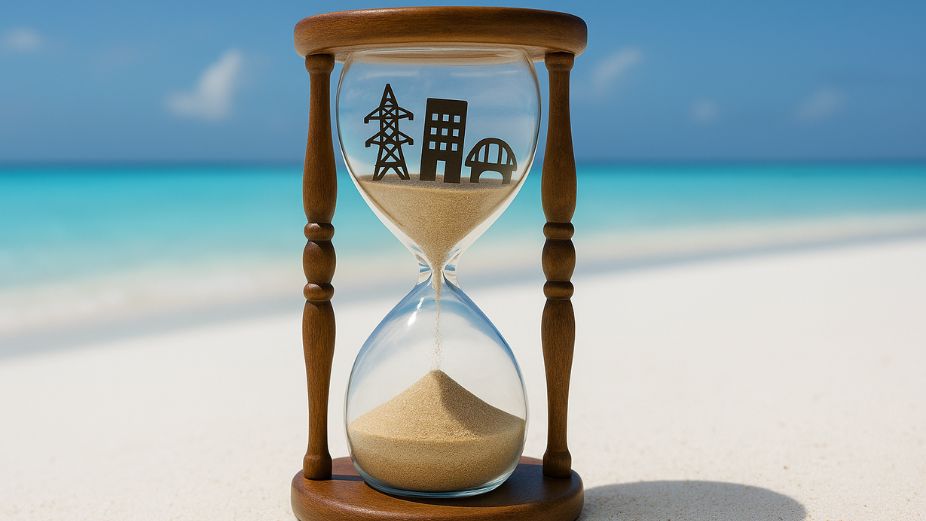
The latest Economic Update by the Maldives Monetary Authority (MMA) indicates that the Maldivian economy continues to grow moderately, supported by public sector activity and a recovery in key industries, although rising inflation and higher debt levels remain points of concern.
According to advance estimates by the Maldives Bureau of Statistics, real GDP expanded by 2.5 percent in the first quarter of 2025 compared to the same period in 2024, marking an improvement from the 1.9 percent growth recorded in the final quarter of last year. Growth was largely driven by the public administration and construction sectors, alongside steady performance in tourism, trade, real estate and financial services. However, output in transportation, communications and fisheries declined during the period.
Tourism data for August 2025 showed arrivals rising by 9 percent year-on-year to 192,058 visitors, though total bednights fell by 7 percent due to a sharp decline in resort stays. Guesthouses recorded a 33 percent increase in bednights, while resorts registered a 13 percent drop. The average stay duration fell to 6.9 days from 7.7 days a year earlier, and occupancy rates decreased to 55 percent.
Inflation edged up slightly to 4.1 percent in August from 4.0 percent in July, driven mainly by higher tobacco, food and restaurant prices. Tobacco alone accounted for more than three percentage points of the total inflation rate, while electricity costs and mobile services continued to ease pressure on overall prices.
Government finances improved marginally as total revenue rose by 8 percent in July 2025 compared to a year earlier, driven by higher tax receipts. However, capital spending contracted significantly, bringing total expenditure down by 14 percent. Government debt increased by 2 percent in the second quarter to MVR 127.8 billion, equivalent to 106 percent of GDP, largely reflecting higher domestic borrowing.
On the monetary front, reserve money fell by 3 percent in August, reflecting lower net foreign assets. In contrast, broad money (M2) grew by 15 percent, fuelled by an increase in local currency deposits and higher lending to both government and private sectors. Credit to the private sector expanded by 5 percent, with strong growth in personal loans and real estate lending, although credit to the tourism sector declined slightly.
External trade recorded mixed results. Exports rose by 8 percent in August, led by higher earnings from tuna products, while imports grew by 7 percent due to transport equipment, petroleum, and construction materials. Over the first eight months of 2025, exports increased by 13 percent while imports edged down by 1 percent.
Gross international reserves reached USD 810 million at the end of August, up from USD 774.5 million in July and significantly higher than the USD 443.9 million recorded a year earlier, representing an 82 percent annual increase.
Overall, while economic activity shows signs of steady recovery and stronger domestic liquidity, the combination of rising prices, high public debt and weaker performance in key export and tourism indicators suggests that the Maldivian economy continues to face balancing challenges heading into 2026.












